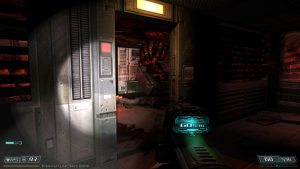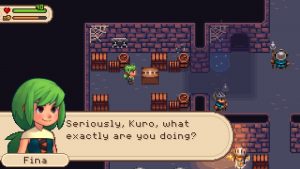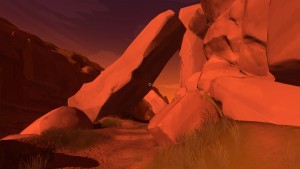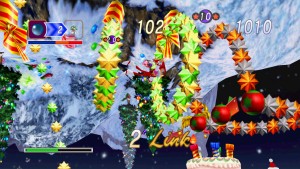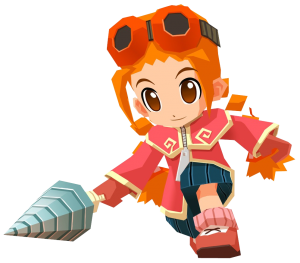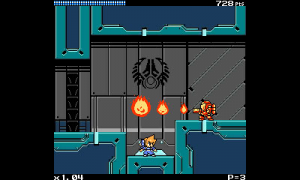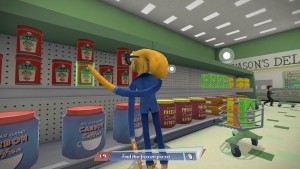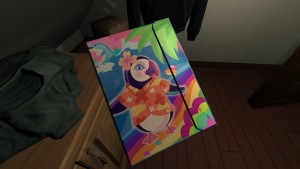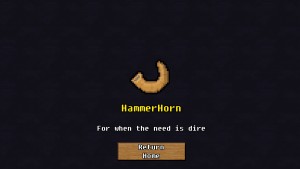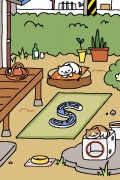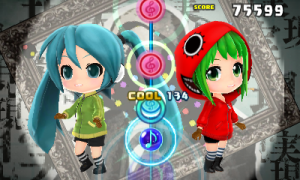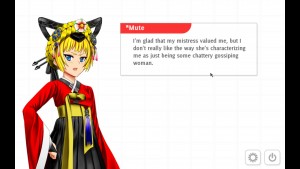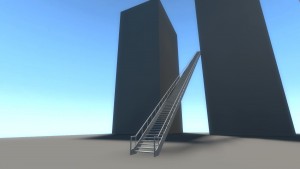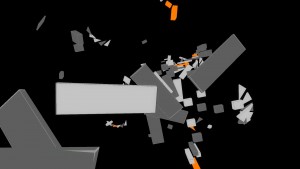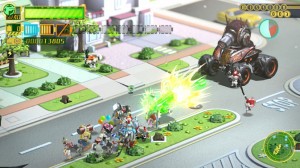Here’s my top ten games played in 2016, presented in the order in which I played and/or beat them. Following each title is the developer/author, the platform I played the game on, the release year on said platform, and a little bit about why it has made this list. As with last year’s Selections, these games aren’t ranked, except for my personal Game of the Year and its runner-ups (the entries this time are a little less wordy, however). I have also added some Honorable Mentions at the beginning, since I played a lot of good stuff this year and didn’t want to overlook certain titles. Anyway, let’s get to it…
Honorable Mentions
– Gurumin: A Monstrous Adventure – for its appealing main character, and being the type of “b-game” that lingers in my mind long after finishing.
– Firewatch – for its incredible sense of place, and realistic characters.
– Bravely Default – for its masterful battle and character customization systems, and outstanding art direction.
– Pokemon Blue Version – for being a deeper-than-expected foundation, and Professor Oak’s nephew, the antagonist I loved to hate more than any other this year.
– Phoenix Wright Ace Attorney: Spirit of Justice – for returning the series to form, and bringing the “Justice Trilogy” to a satisfying conclusion.
There’s also a few great games which I played this year but didn’t beat or play enough of to consider for this list: Spelunky, Project CARS, and Picross 3D Round 2.
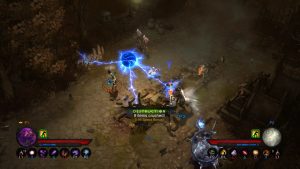 Diablo III: Ultimate Evil Edition
Diablo III: Ultimate Evil Edition
Blizzard Entertainment | Xbox 360 | 2014
Playing a Diablo-style action RPG on a console, with my co-op partner sitting right next to me, is a wonderful experience I wish I could have more often. What’s most remarkable is that it happened with an actual Diablo game. The story is typical Metzen Cheese™, but told within suitably epic trappings and with a satisfying loop of fight and loot. For a console version of a very PC-centric game, the controls are remarkably good as well: somewhat complex, but thought out well enough that they soon become second nature. I do wish there was more variety in the loot available in the Resurrection of Evil expansion, and there’s only so much Metzen Cheese™ one can take at a time, but if you’re looking for a solid couch co-op game, this is one which I highly recommend.
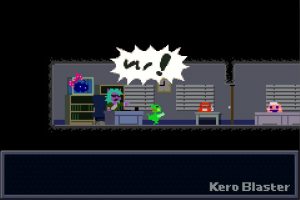 Kero Blaster / Pink Hour / Pink Heaven
Kero Blaster / Pink Hour / Pink Heaven
Studio Pixel | Windows | 2015
Pixel’s follow-up to his masterpiece Cave Story is a run-and-gun shooter with a slightly more whimsical tone. In this outing, a frog gets teleported out onto the field to complete cleanup missions for his employer, but in the meantime, a problem manifests itself in the boss’ office. Despite the switching up of genres, the action should be familiar to anyone who has played Cave Story, and even improves on it in some small, but welcome, ways. Kero Blaster is, flat-out, a joy to play, and its two free tie-in games, Pink Hour and Pink Heaven, are worth checking out as well.
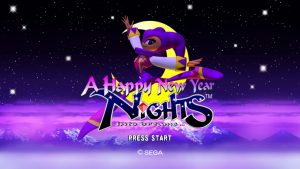 NiGHTS into Dreams… / Christmas NiGHTS
NiGHTS into Dreams… / Christmas NiGHTS
Sonic Team | Windows | 1995-96 (Windows port: 2012)
NiGHTS is the strangest game I played all year. It’s a mascot platformer with not much use for platforms; instead, the title character flies and floats around dense dreamscapes. I found the game disorienting at first, but once I got the hang of things, it was like nothing else. It is also not as difficult as certain similar games of its era, so despite one or two frustrating bits, I was able to beat it. One of the bonus features in the PC version of NiGHTS is Christmas NiGHTS. More than just a reskin of NiGHTS‘ opening areas, it is a charming demo with a standalone story and plenty of holiday spirit.
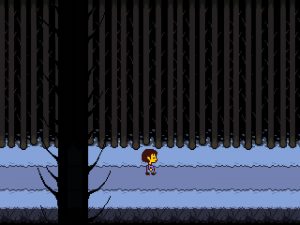 Undertale
Undertale
tobyfox | Windows | 2015
I don’t know what’s left to say about Undertale at this point. The characters are marvelous and true to life, and the plot slots them into archetypal JRPG roles in interesting ways (this is particularly true of Alphys). There is humor galore, from meme-ready running gags, to more traditionally funny scenes, to a certain unexpected and hilarious parody. There is also tons of heart, in several ways. Its fandom is crazy about this game and after one playthrough, and then another, it became easy for me to see why.
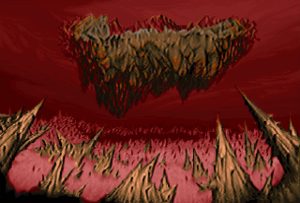 Doom
Doom
id Software | Windows | 1993-95 (via Doom 3: BFG Edition, 2012)
Playing Doom—and beating all of its episodes for the first time—ended up being more than just a nostalgia trip. Despite the lack of modern niceties such as aim assist, weapon customization, and jumping, it plays just as well, and is as enjoyable and engrossing, as back in ’93. The only real low point is Episode IV, first introduced in The Ultimate Doom and included here, but even that would be a solid set of maps in most any other FPS. Doom is, and always will be, just that good.
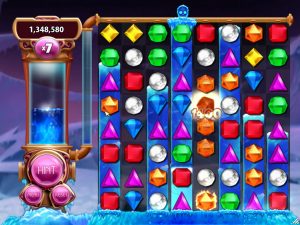 Bejeweled 3
Bejeweled 3
PopCap Games | Windows | 2010
A modern classic of match-three puzzling, with a sufficient amount of strategic depth and wealth of variant modes to keep things interesting, from the frantic (Ice Storm) to the relaxing (Poker). The epic music and voice-over were unintentionally funny to me at first, but after spending many hours switching gems around, I can’t imagine the game without them. Bejeweled 3 ended up hooking me so much that it became one of a small number of PC games which I felt compelled to get all the achievements in.
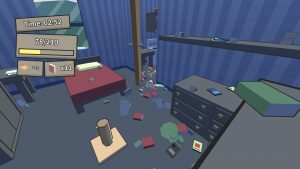 Catlateral Damage
Catlateral Damage
Chris Chung/Fire Hose Games | Windows | 2015
If you ever need something cathartic—no pun intended—to play for a few minutes or longer, I heartily recommend Catlateral Damage. It’s a first-person cat simulator where the goal is to knock everything onto the floor. The main campaign is short, but there is a decent amount of stuff to do and see, including some nifty themed maps, unlockable cat photos and playable cats, cat toys that grant stat boosts, and special limited-time events, like low gravity and chasing laser pointer dots. Playing a misbehaving cat is, as it turns out, an enjoyable way to pass some spare time.
 Third Place
Third Place
Pokemon GO
Niantic/The Pokemon Company | iOS | 2016
Looking at this strictly in terms of mechanics, and especially when it’s compared to its primary source of inspiration, Pokemon GO may be the worst game on this list. However, for me, it has also been one of the most engaging of the past year. There is something intriguing about going out into the real world to catch Pokemon and use them to fight at gyms. The team system encourages local rivalries, and periodic updates and special events have generally made the game better since it first launched. I currently have most of the Pokedex filled, plus a pretty beefy team of gym-fighting regulars, so I’ve lapsed a bit in my playing, but for much of the summer and fall, Pokemon GO proved to be a great way to get me out of the house for some simple exercise for an hour or three. If more second-generation Pokemon get added, I’d probably continue to do the same in 2017, since I’d love to see Skarmory, Marill, and other favorites in my ‘dex.
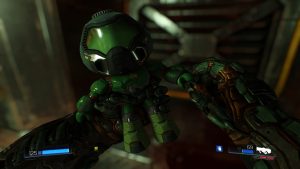 Second Place
Second Place
DOOM
id Software | Windows | 2016
It feels odd to place this above the original Doom, which is one of the greatest and most important games ever made. However, in terms of how much I was captivated by each game I played this year, I feel that this new one deserves its place. It is, more than anything else, bone-crunching, and also metal, and at times quite witty. As a character, the Doom Marine is stellar, a silent first-person protagonist who brims with personality through mere eyelines and hand movements. The world he inhabits is sprawling, with some (mostly) cleverly hidden secrets, and incorporates the best ideas from all the previous numbered entries in the series and then some. The gameplay, and gunplay, is exhilarating, with one of my favorite parts being an ammunition and health drop system which, amongst other things, means one no longer has to hoard BFG ammo. It is everything I have loved about Doom made modern, and might be the finest single-player FPS campaign of all time.
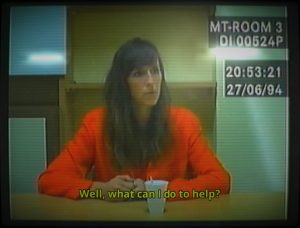 First Place: Game of the Year
First Place: Game of the Year
Her Story
Sam Barlow | Windows | 2015
My Game of the Year was decided early on. Rarely have I come across a game narrative that’s so pulpy, with so many what the fuck moments as in Her Story. It is very, very difficult to talk about why this is without giving anything away, especially that one word I felt compelled to search for after watching a certain amount of video, that one word which means so much to the plot.
First, let’s back up a little. In Her Story, you are an unknown and unseen person who is sifting through interview clips stored on a long-neglected police database. You start with the word “MURDER”. The interviewee is the wife of the victim. To progress, searching for additional clips through keywords, piecing events together along the way, is key. However, even after seeing the clip needed to trigger the option to end the game, it’s hard not to keep going, and yet, some hard answers remain just out of reach. I’ve seen every single snippet of video in Her Story and am still not entirely sure of what has happened. This is a game tailor-made for people who enjoy theorizing over vague endings, and love mysteries in general.
If you’ve been reading this blog for awhile, you may have noticed that I’m a stickler for good storytelling in games. Some of the games on this list, particularly Undertale and DOOM, have very good stories, but nothing like this. Her Story is a must-play achievement in narrative games, one that excels in both concept and execution.
